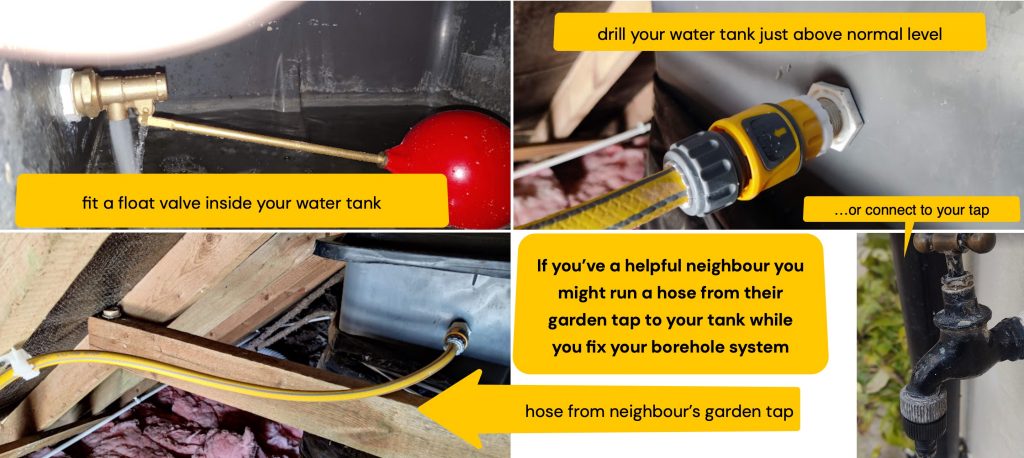a water supply borehole – the plumbing
Houses and farms in remote places pump their water from an underground source. I don’t have a choice in the matter – a borehole comes with costs in maintenance and water quality monitoring. On the plus side there’s a huge saving in water utility bills. Twenty years on my spending has been trivial compared to those bills. I mostly DIY the maintenance eg I keep spares for repairs as next day delivery can itself be too long. You too may need to DIY if electricians or plumbers aren’t available – my two pages may help you decide when a professional is needed. Otherwise see my borehole electrics and control page here.
today’s borehole plumbing
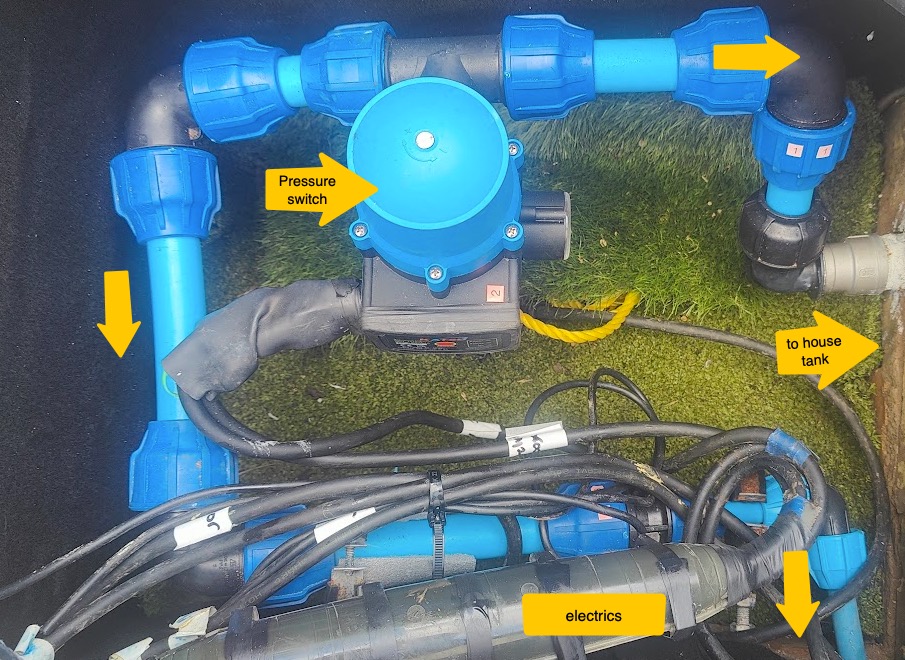
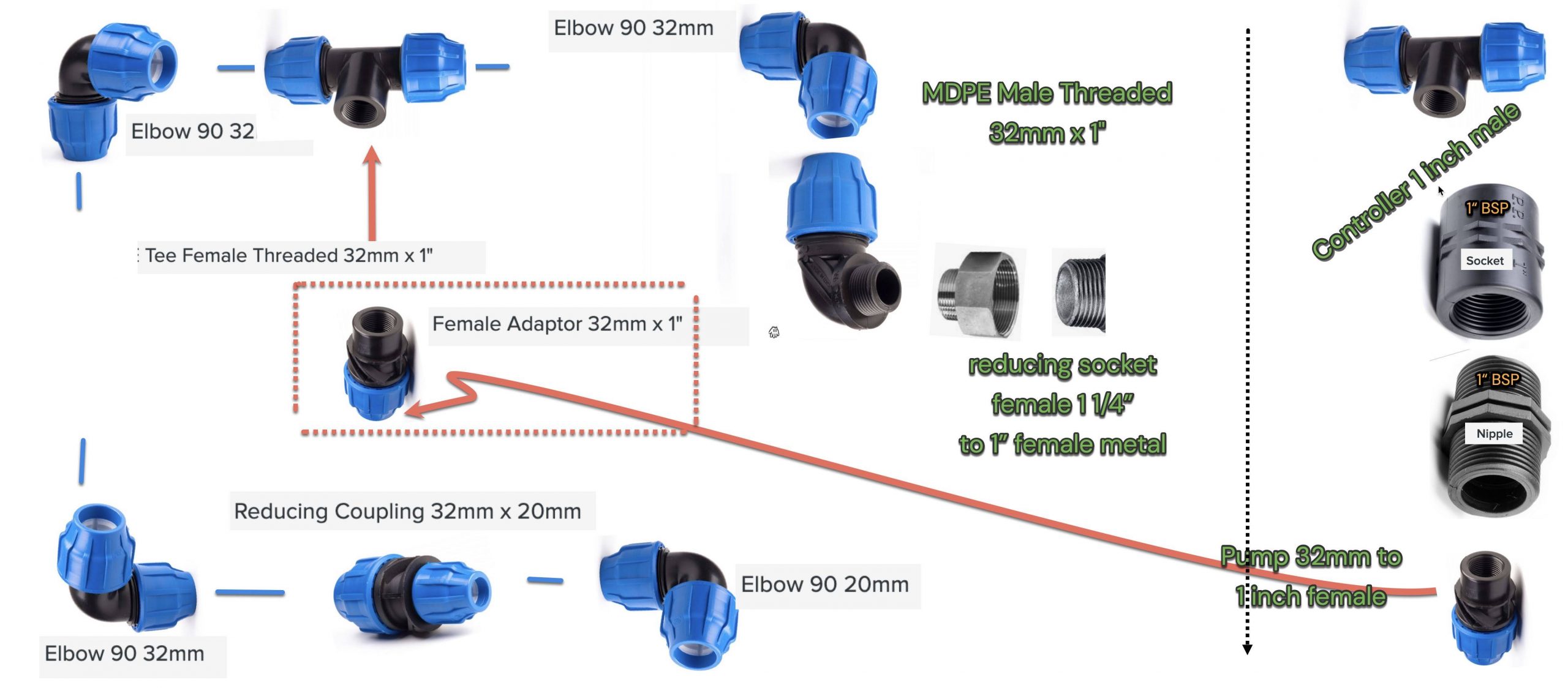
This is what I see below my borehole manhole cover. The current set up (2023) uses 32mm MDPE which is easy to take apart and reassemble. Smaller sized MDPE might have allowed more space but in my calculations this was not enough to add even one extra fitting. The cost of all this is £150.
I’ve lined the base of the manhole with plastic grass as it stops me losing things down a well! Other points of interest: a 1¼ inch BSP metal transition for the house mains pipe; a tee-off to a reducing elbow for the garden hose tap. Also a ‘torpedo’ to seal the mains wiring which comes from the house to the pressure switch then back into the house (a box with capacitor) and then back out and down to the motor in the borehole.
the previous pipework manifold – don’t do this
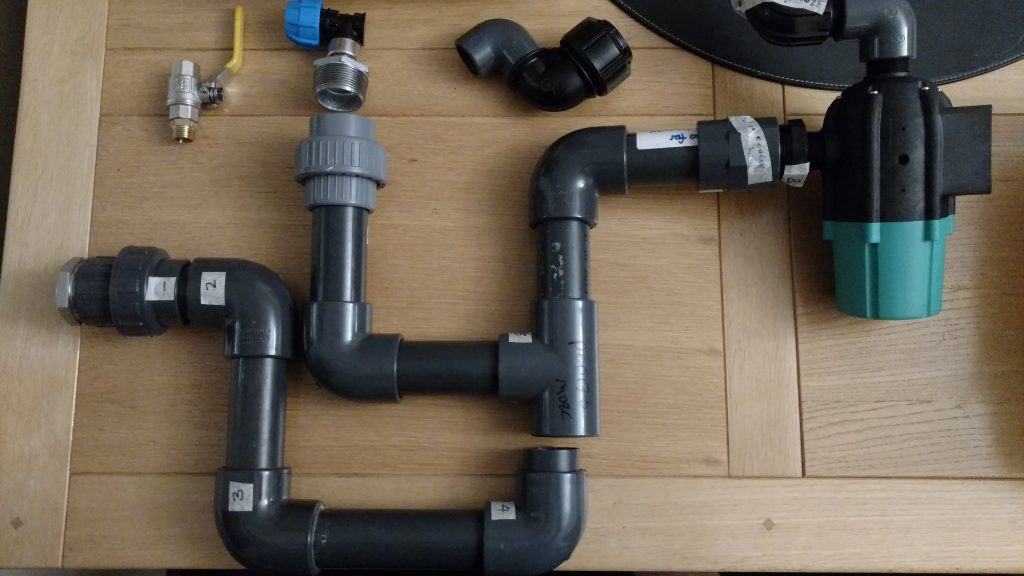
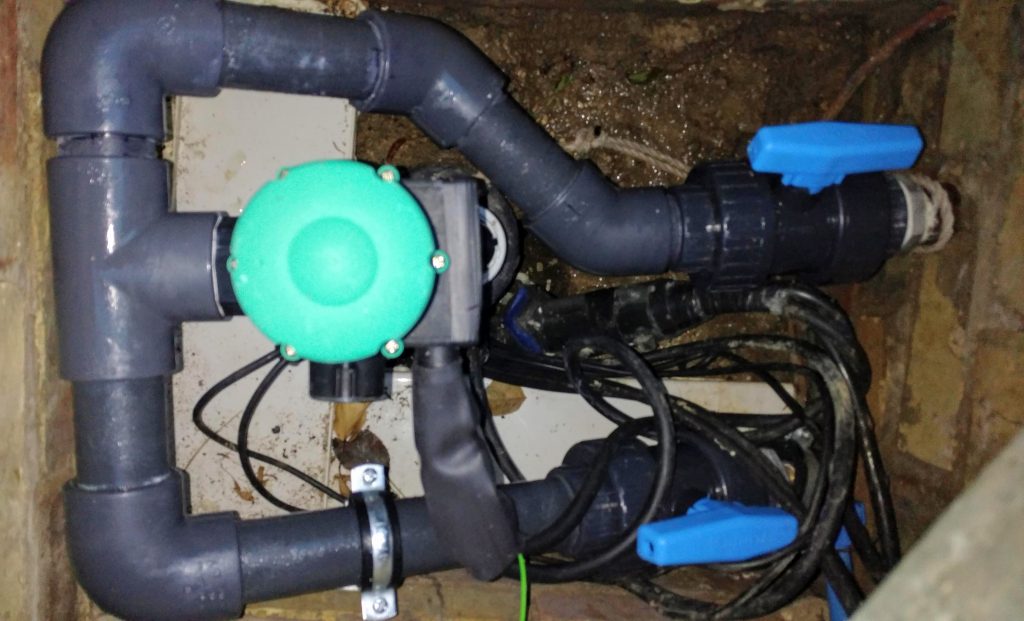
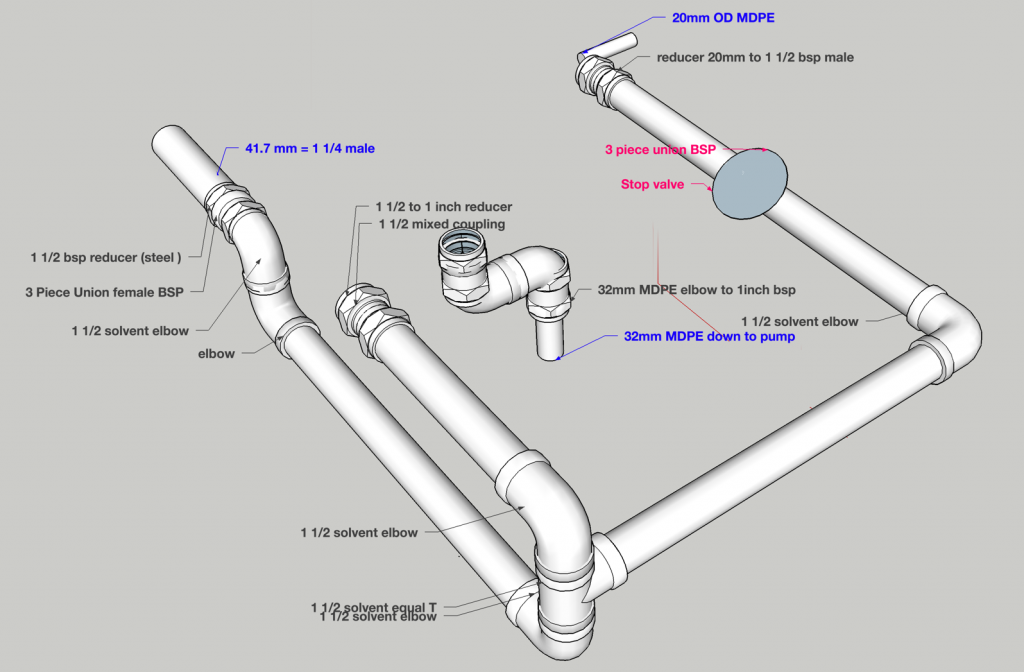
The pipework here is 1.5 inch (1½) PVC using solvent welds wherever possible (2018). This pipe is incredibly robust and handled the slight ‘jolt’ when the pump starts and stops. The blue stop valves are not entirely necessary but they act as couplings and allow the manifold to be removed if needed. Perfect as this could have been for years, the solvent welds didn’t allow enough dismantling for maintenance. One specialist thought it was brilliant but another didn’t. So I remade everything in blue MDPE (£150) and replaced the failed pressure switch circuit (£30). BTW these solvent joins need PVC cement. Some people advise on using ABS pipe but others advise to use MDPE. I’d copied my inflexible pipe plan from the existing professionally fitted manifold. The 30+ year old borehole pump and motor were replaced by a local company in September 2021 (£3000) but I feel this was unnecessary except to provide some confidence from having better connections.
the previous previous pipework manifold – don’t do this either
The original system, which worked for many years, consisted of the borehole pump pipe running directly to a house tank*. A cable that powered the pump stretched over the garden to a float valve in the tank to signal when it was full. There were high and low water level sensors in the borehole, these went to a protecting Maniero board containing a capacitor. The Maniero box was sealed but under the manhole cover. If ever I opened it I could drain water from it so the system I inherited may never have worked reliably.
The next professional to work on the system added a Coelbo Controlmatic pressure switch which offered better protection against over running and dry running. The plumbing was also replaced with 1.25 inch (1¼) PVC pipe. Starting and stopping the pump would jolt the skinny pipework. He didn’t wait for his solvent joins to weld so the pipework only fell apart and I was fixing it with cable ties! I copied his pipe plan and remade the pipework manifold in 1.5 (1½) inch PVC. Most usefully a cowling was added to protect the top of the borehole.
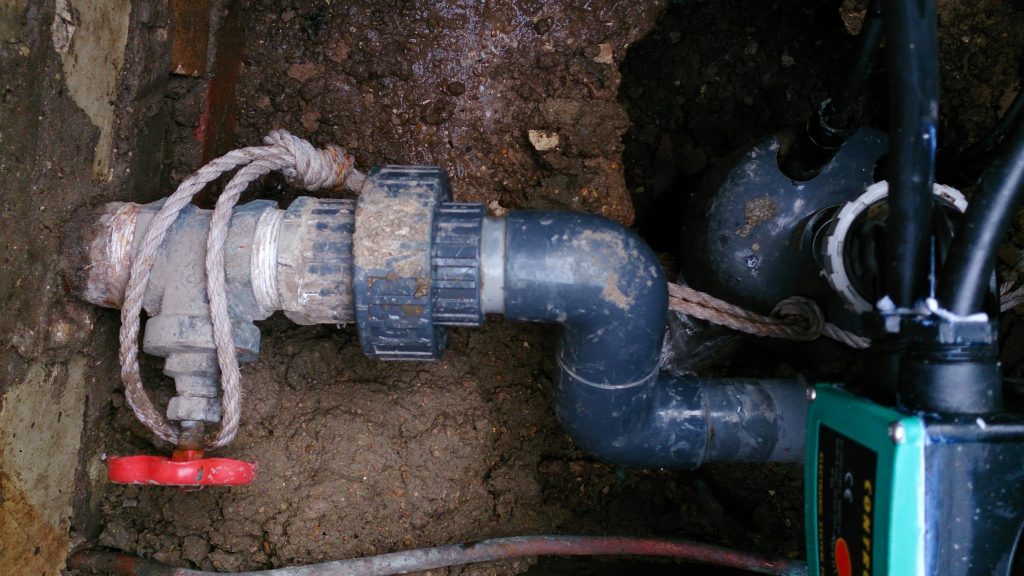
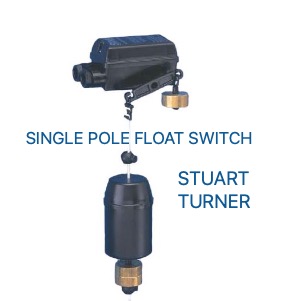
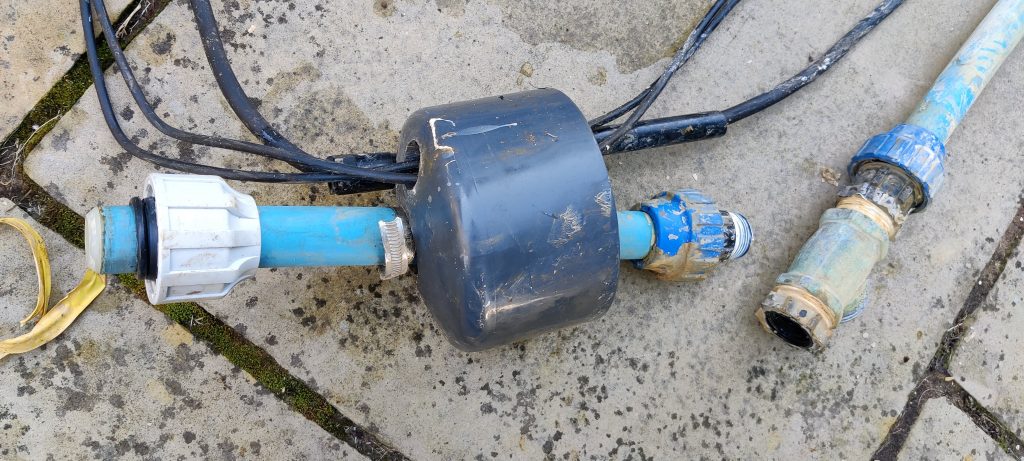
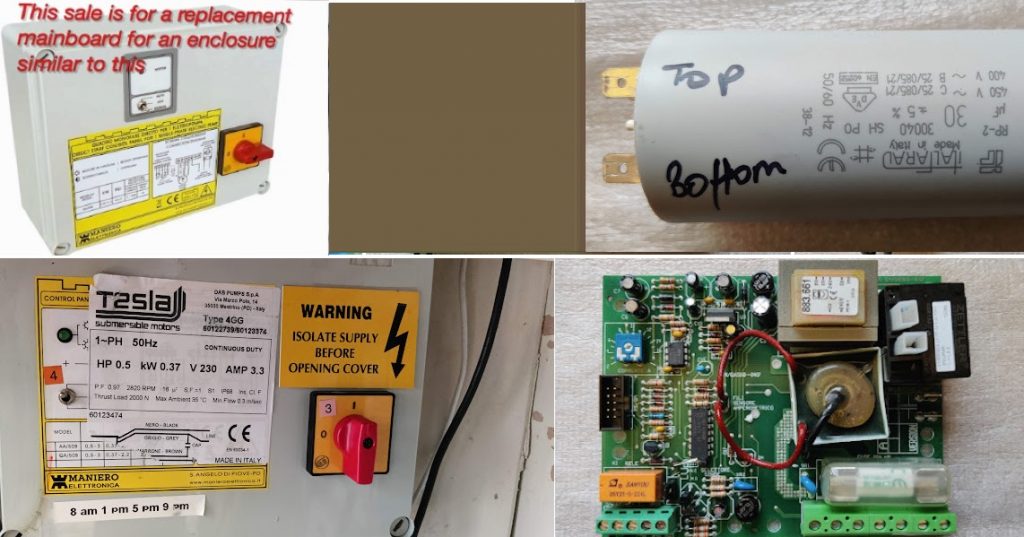
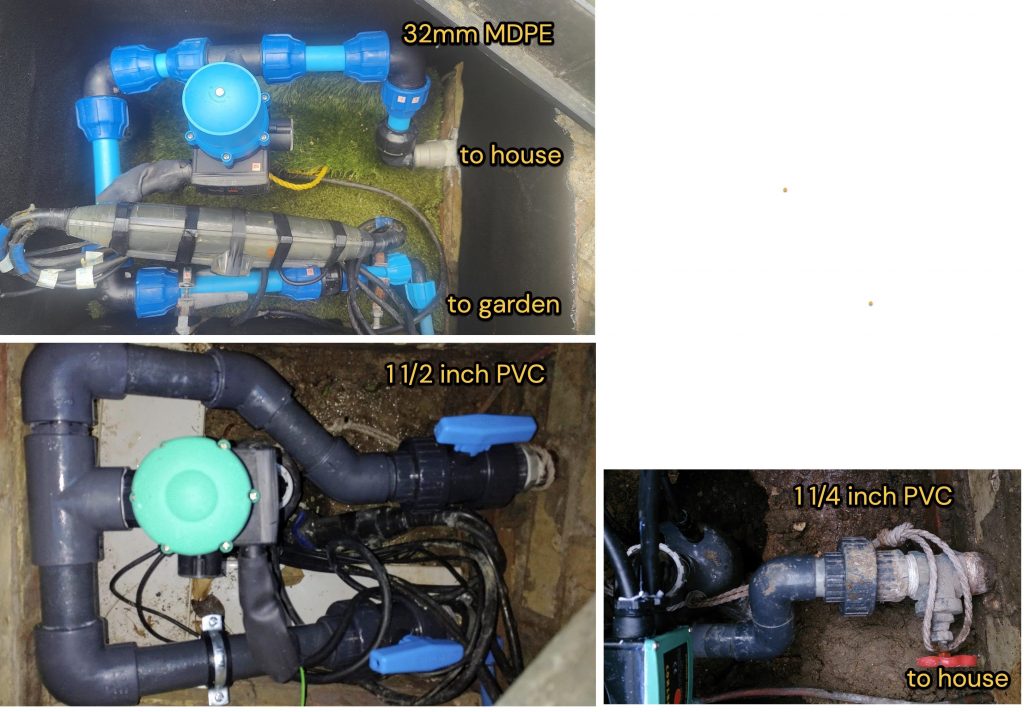
*You might notice that the metal pipe on the right labelled ‘to house’ lines up directly with the borehole. In the setup before this the borehole pump supply went directly to the house without a pressure switch and without a useful outlet to a garden tap.
getting water from a neighbour in an emergency
Back in the day, one Christmas, we suffered when the system failed. Be kind – I had none of the understanding above. In any emergency today I hot wire my pump – see here but for the emergency back then I unrolled a regular garden hose pipe from the neighbour’s garden tap over to my tank. This needed several hose lengths of the type that doesn’t bend too easily plus some pipe joiners. It helps if you have a ‘stop end’ on the hose because the neighbour’s tap can be kept turned on. You just disconnect the hose to turn off the supply. Now’s the time to fix a leak in their tap connection.

Back then I simply put the supply hose in my tank until I could see the tank was full – I then pulled the double-male connector off the aquastop end. I COULD have connected the supply hose to a garden tap (shown below). However the better way was to fit an extra ball valve to my water tank and run the water supply to that. Every time the tank level drops the tank refills. This is rarely used but it will make the next emergency less of a worry.
